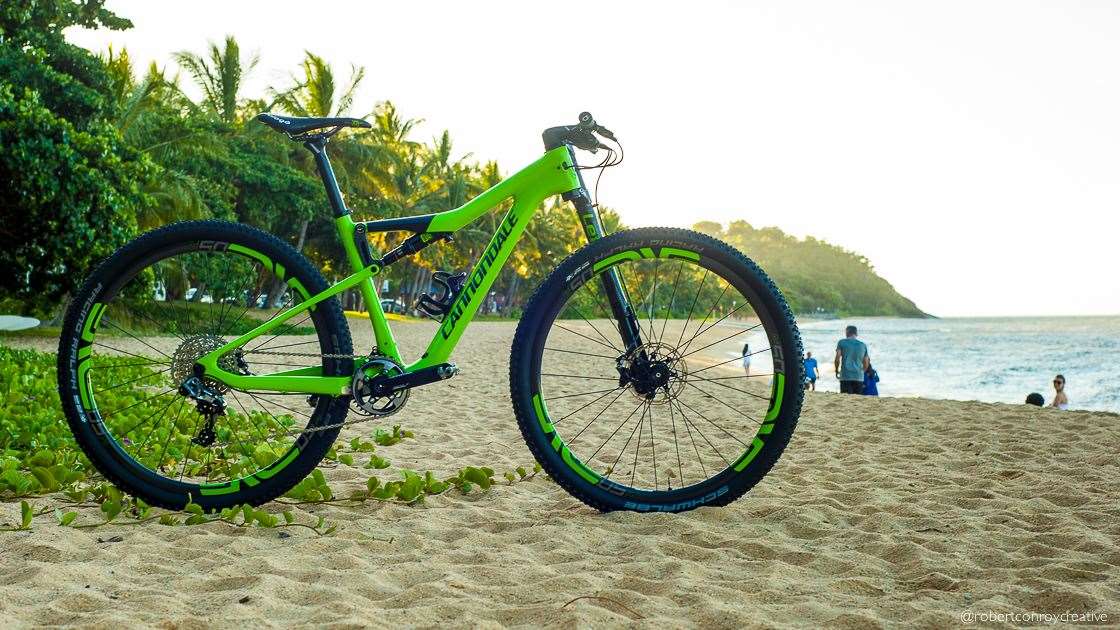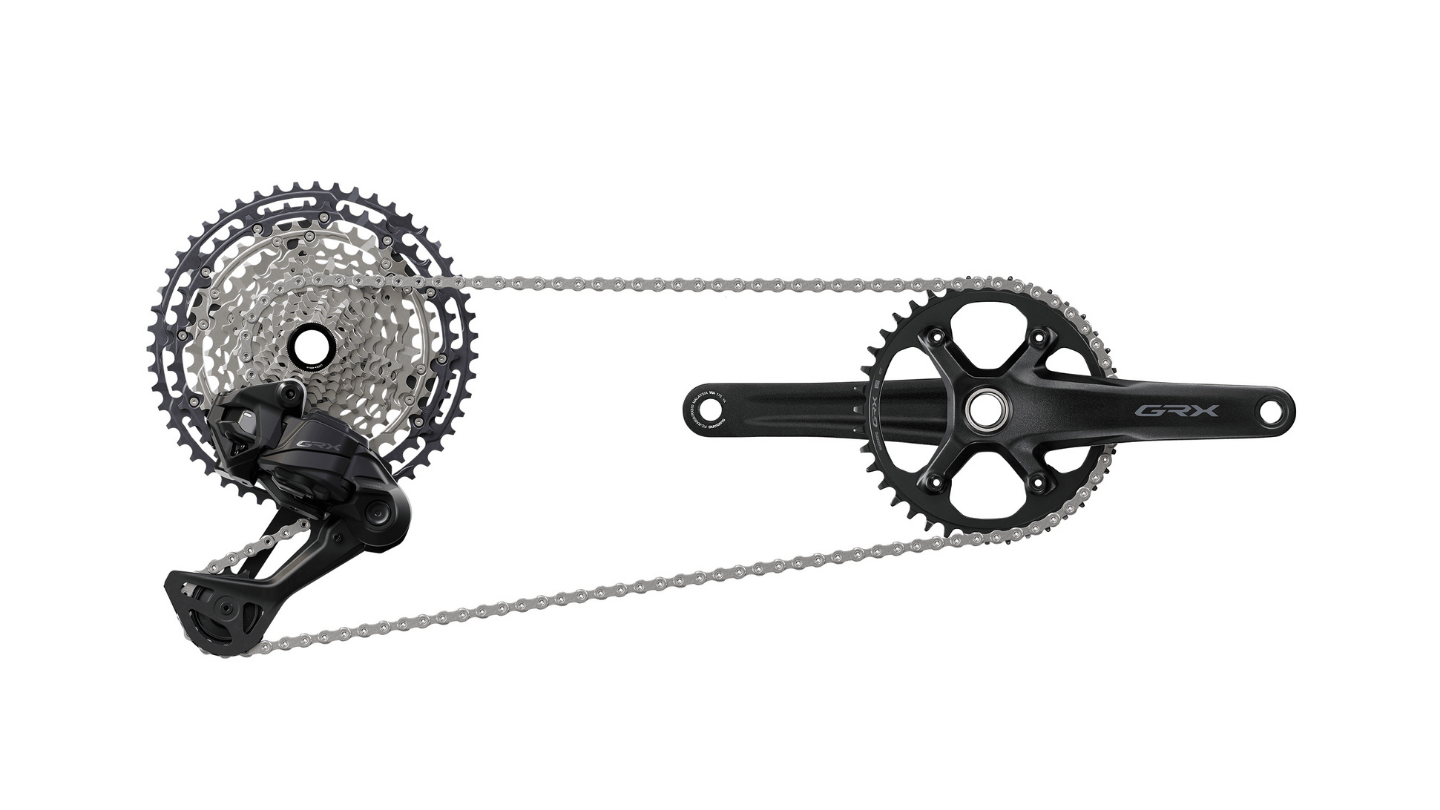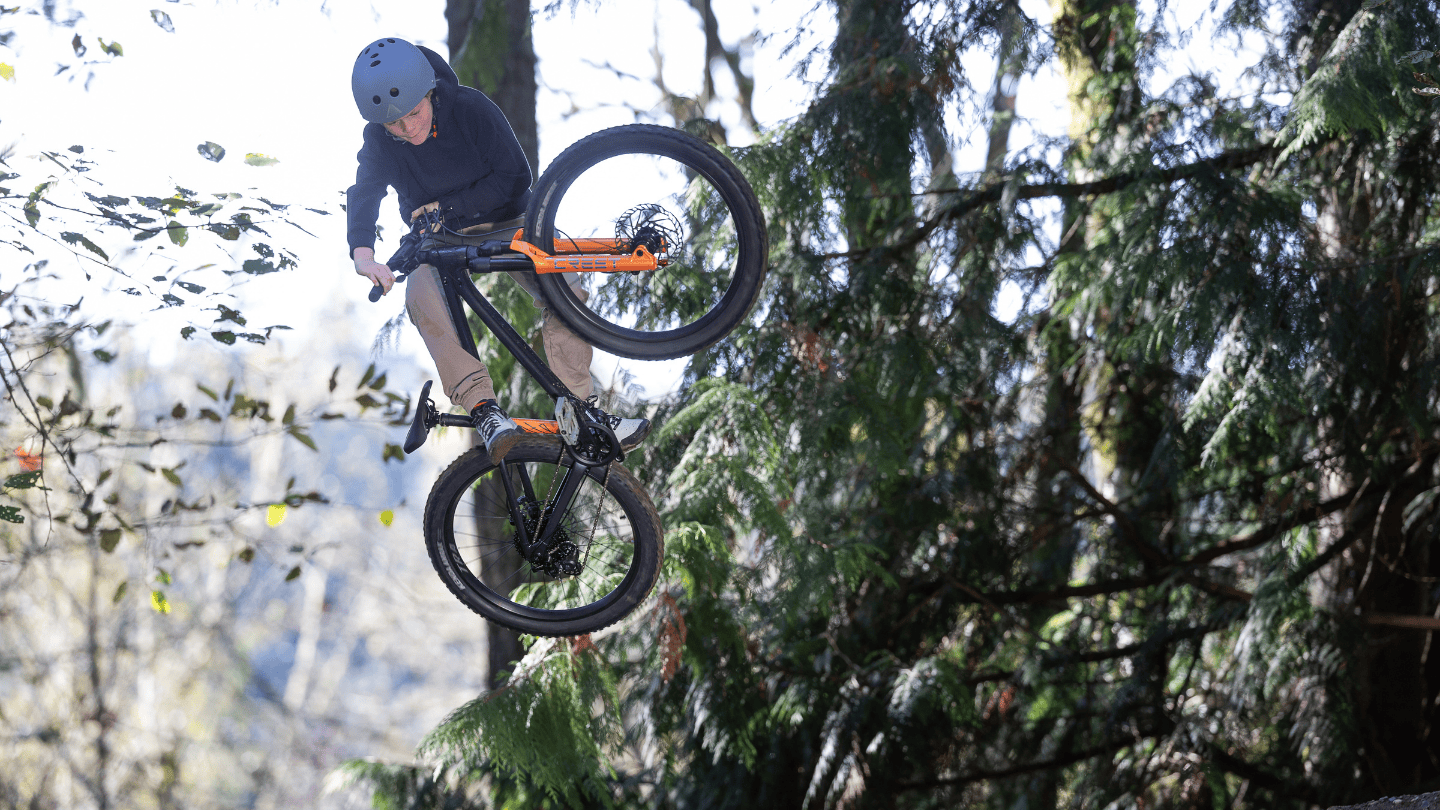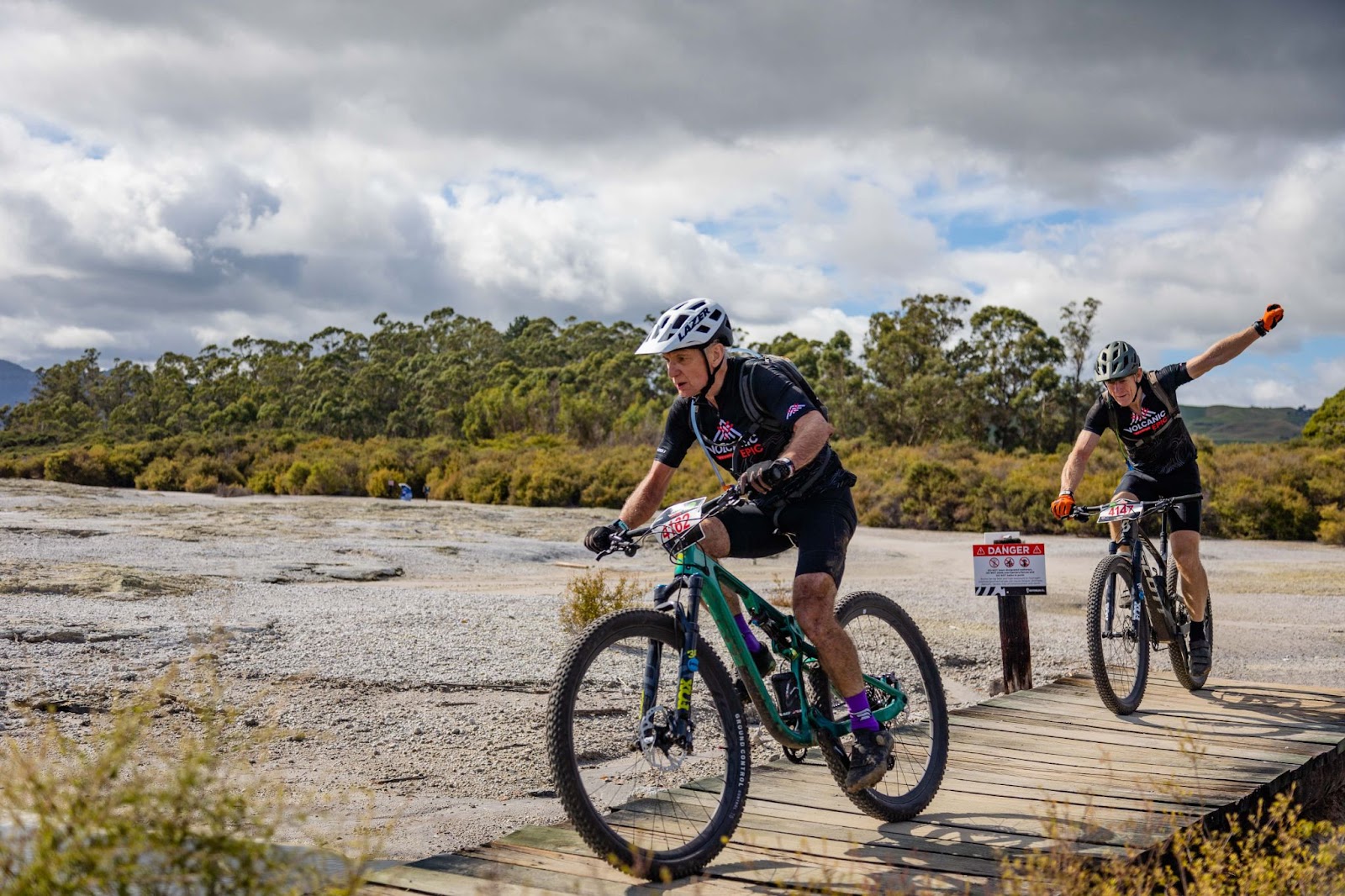Cannondale release the Scalpel Si
Ahead of the World Cup in Cairns, we were invited into the Cannondale team house on the shores of Trinity Beach, in Tropical North Queensland.
Ahead of the World Cup in Cairns, we were invited into the Cannondale team house on the shores of Trinity Beach, in Tropical North Queensland. While there were beers and chips for all, and Marco Fontana was dressed in slacks and loafers – it was more than just an informal sunset beer and catch up. Cannondale have launched a new cross-country dual suspension bike to follow in the footsteps of the Scalpel, but take cues from the F-Si hardtail. Cannondale released the Scalpel Si.
The Scalpel Si – the birth of XXC
One of the teaser campaigns around the Scalpel Si was about the birth of XXC. More than another acronym in a sport flooded with them, what Cannondale are trying to say is that the Scalpel Si is about extreme cross-country. It is about taking the bike’s weight, stiffness and geometry to the extreme, plus pushing suspension performance to the limits currently allowed by engineering. The idea is that the Scalpel Si will also let you find your limits in extreme formats of cross-country mountain biking.
If you looked closely in March, you would have seen the Scalpel Si in use at the Cape Epic. And of course, Manuel Fumic and Marco Fontana of Cannondale Factory Racing was onboard the Scalpel Si in Cairns, while Fontana was also training on the course with a F-Si. The telltale sign from afar, most noticeable in a longer event, is the capability to carry two water bottles inside the main triangle, not something that is common in dual suspension mountain bikes. However, there are far more changes to the previous Scalpel than just that.
Inside, and outside, the Cannondale Scalpel Si
If you have followed Cannondale for the past, say, 25 years, you would know that the company is driven by innovation. Part of their innovation is integrating parts of the bike, to stop them being seen as individual items that are put together to create a whole. Cannondale call it System Integration – but many engineers would call it common sense. One of the classic design pieces is the Cannondale Si crank set. This essentially started the BB30 standard, and was based around the lighter and stiffer 30mm alloy spindle, with bearings pressed into the frame. Cannondale’s cranks were hollow, and set new benchmarks for low weight and high stiffness. They still do. Cannondale created a new standard with their crank and bottom bracket, and BB30 still has clear advantages.
The Si concept goes further, to the Lefty fork and it’s own hub, OPI stems for the Lefty steerers, seatposts with flex designed to complement their carbon hardtails… and then to the update of the F29, to the F-Si for 2015. Cannondale’s flagship hardtail had a rejig with shorter headtubes, a new Lefty fork, and a move to a 142×12 rear end, with a difference.
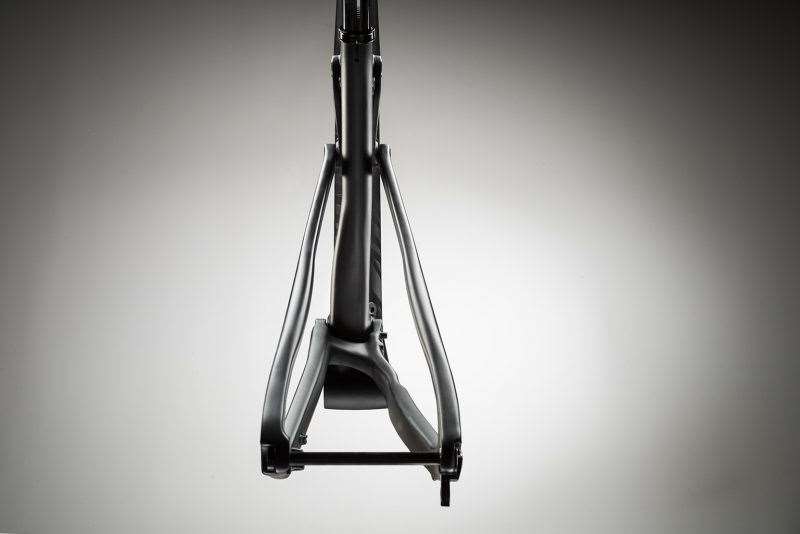 It looks the same – but it is off-centre.
It looks the same – but it is off-centre.Cannondale didn’t choose to adopt Boost spacing to achieve shorter chainstays, greater tyre clearance and better handling. Instead, they moved the whole chain line over towards the driveside by 6mm, and improved the dish of the wheel at the same time. And with the Si crankset, using the Spider Ring (a direct mount chain ring) the correct chain line is maintained. So that way the rear wheel is stronger, the chain line is better, the chain stays are shorter – and the optimum handling is achieved. This has a name of course, it’s Asymmetric Integration (AI). But don’t fret, the bike won’t turn one way better than another, the optimised dishing of the wheel means the rear wheel tracks behind the front!
This same use of the 142×12 comes to the Scalpel Si, which is a real bonus for anyone owning the F-Si as well, as the wheels will be compatible. Cannondale changed more in the back end though, moving the disc mount inside the swing arm, with a flat mount standard that keeps the seat stay free to flex as it needs to. The Scalpel Si doesn’t have a dropout pivot – no Scalpel has. And this newer (but actually older!) disc mounting standard helps keep the frame function as best as possible.
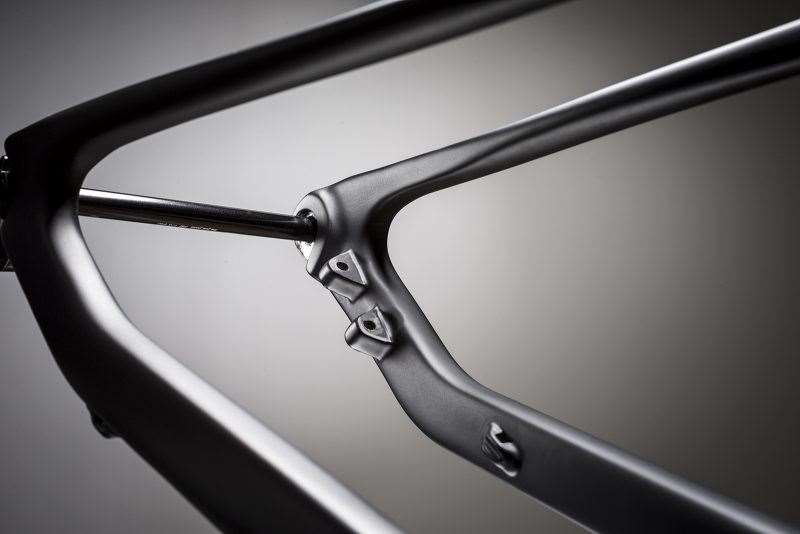 142×12 with a flat mount disc mount.
142×12 with a flat mount disc mount.The mainframe has been reworked in a number of ways. Firstly it’s fully designed for internal routing. Be it mechanical, 2x, 1x or electronic, it is designed to take it. It also has stealth dropper routing, and has an ‘Si’ mount inside the top tube for a Di2 (or other…) battery. While we have seen Di2 batteries in the seat tube along with a dropper, that’s not possible on all frames, with all droppers. This solution creates a neat and secure option that will work for all posts and frame sizes.
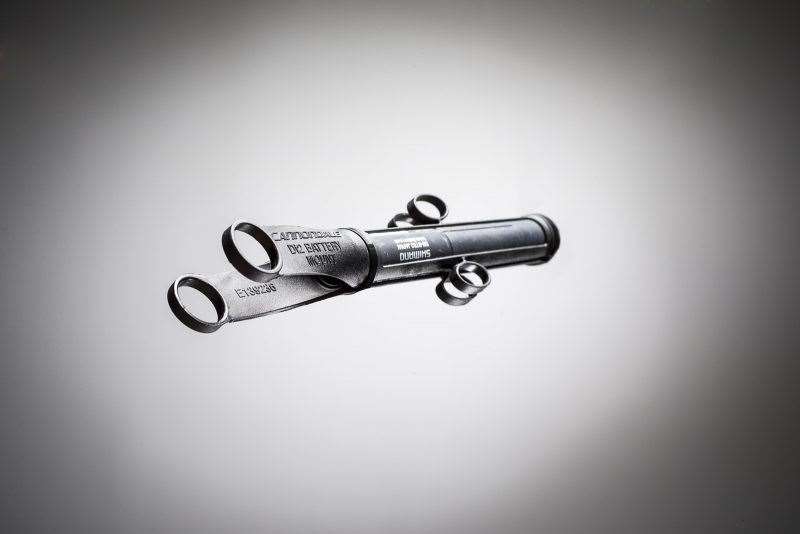 Place your battery here for zero rattle.
Place your battery here for zero rattle.You can also see the rear shock is tucked neatly into the frame. In part, it creates more room for bottles, which is so essential for the distance based cross-country racing that the Scalpel Si is also targeted at. Have you raced many marathons on one bottle? It’s not fun, and not recommend. The design also looks cleaner, creating a clean line from headtube to dropout, an aesthetic point the design team wanted. And it also means the hydraulic lock out hose goes through the frame directly to the shock. This did take a custom banjo from RockShox, but Cannondale worked closely with RockShox to get the shock tune perfect for this bike, so it’s a very good partnership. Cannondale spec the double lock out for the rear shock and Lefty 2.0 up front – possibly the best lockout in the business, although Fox’s IRD should be pretty amazing – although that’s not likely to be a possible upgrade.
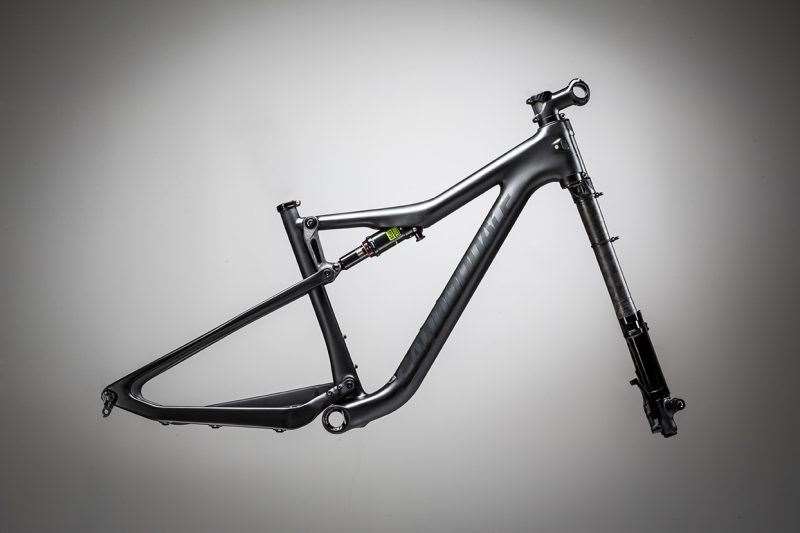 The whole frame and fork cuts a clean line.
The whole frame and fork cuts a clean line.What we’ve neglected to look at from our back to front detailing is just that. The front. Cannondale have coined the term ‘AI’ for the back, but up front it’s OutFront steering that creates control and accuracy. The Lefty 2,0 has increased rake, putting the wheel further in front of you. A standard fork has 45mm rake. G2 forks, like those used on Treks and some other bikes, including the Norco Revolver FS, use a 51mm rake. This Lefty uses a whopping 55mm rake. Match that with a fairly slack (for XC) 69.5 degree head angle, and you end up with a pretty tight trail measurement.
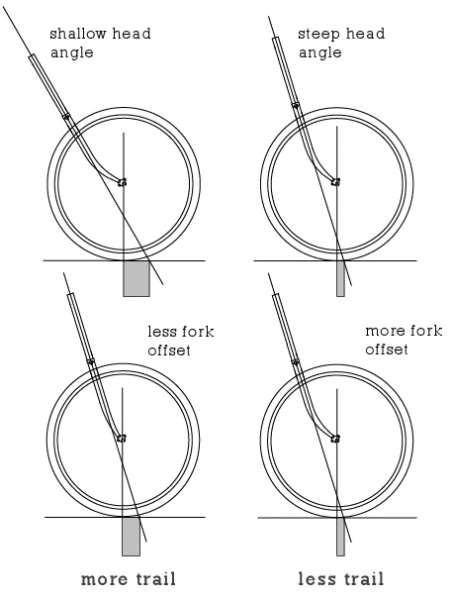 This sketch from Ducati might help explain it.
This sketch from Ducati might help explain it.So that tight trail measurement means agility at low speed. And the slack head angle and long rake creates stability at high speed. The best of both worlds, right! Well mostly, it does create a pretty long wheelbase, but the steering, aided by short stems and wide bars, does negate that for handling. Bike bags might need to get a little longer soon though.
Cannondale also moved all cables and hoses internal on the main frame, with some very neat ports. With lots of options, you choose the right size guide, be it for 4mm cable outer, 5mm hydrauklic hose, or 2,5mm Di2 wiring. It’s stable, quiet, and neat. And oh so versatile.
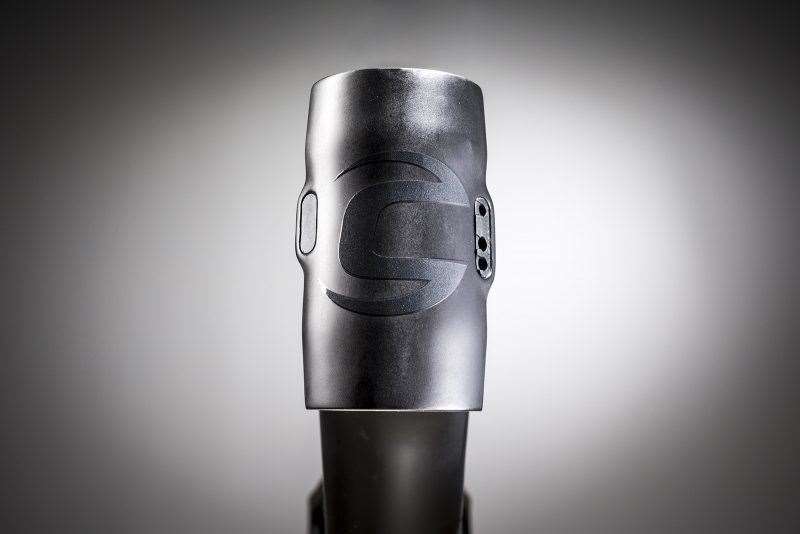 You can barely see the ports.
You can barely see the ports.The linkage is also new. Sure the general suspension design is the same, but the frame actually preloads the suspension, acting like a negative spring on the shock. One of the biggest changes in the linkage is barely seen, it’s the LockR bolt. Instead of pinch bolts holding it together, one bolt squeezes the other to tighten, so there are less parts, less flex, and less weight. Exactly the kind of thing Cannondale do to just about everything.
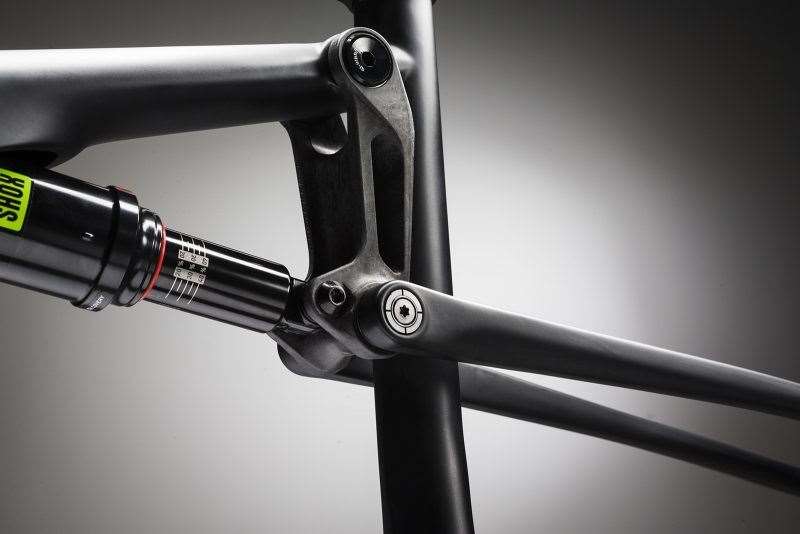
So when can we get a Cannondale Scalpel Si?
They’re on the way! But due in September. There are 10 models, all with 100mm of travel. The Medium, Large and XL sizes have 29″ wheels, but the Small, and Women’s XS, Small and Medium are all 27.5″. If you’re reacing XCO, XCM, 24hr races, or other lap based endurance racing, Cannondale have built a bike designed for you. It has supple and efficient suspension, modern geometry, a stiff and light frame, and comes in alloy and carbon versions, from SRAM GX 2×11 builds up to XTR Di2. Get onto your local Cannondale Dealer to find out more.

